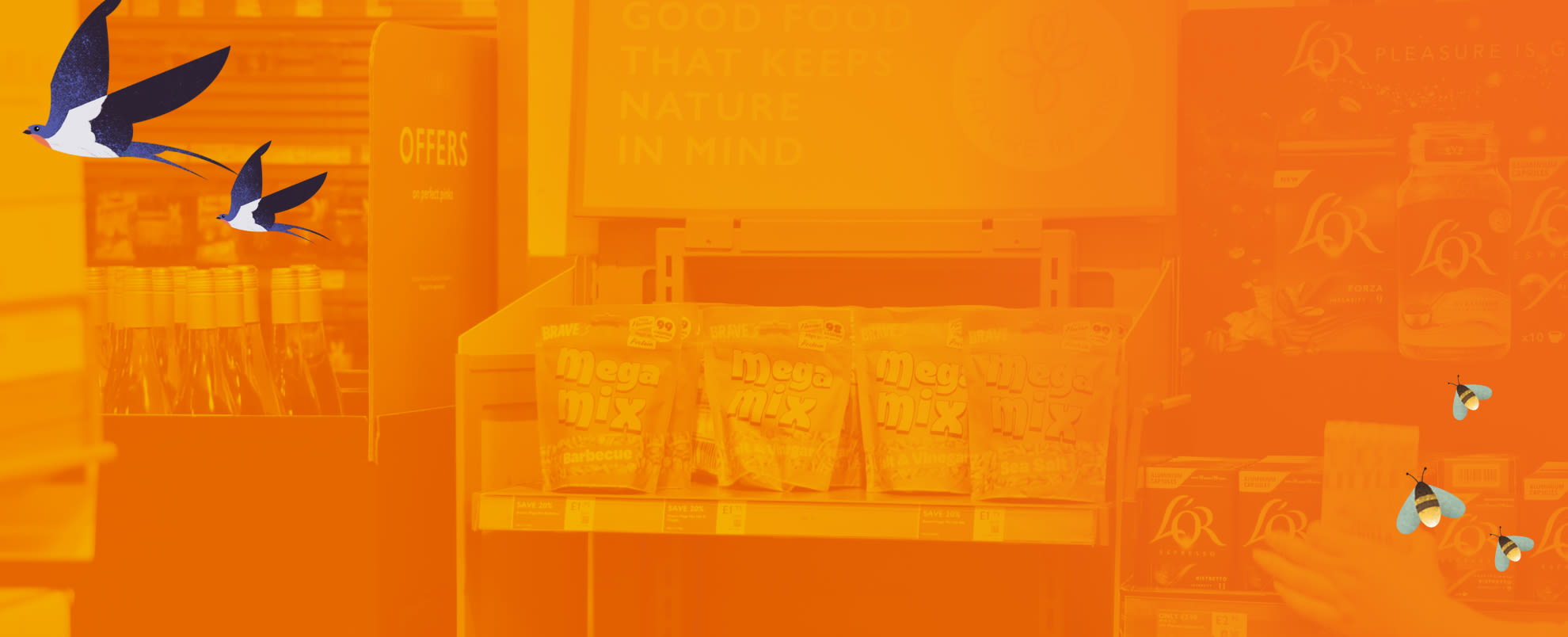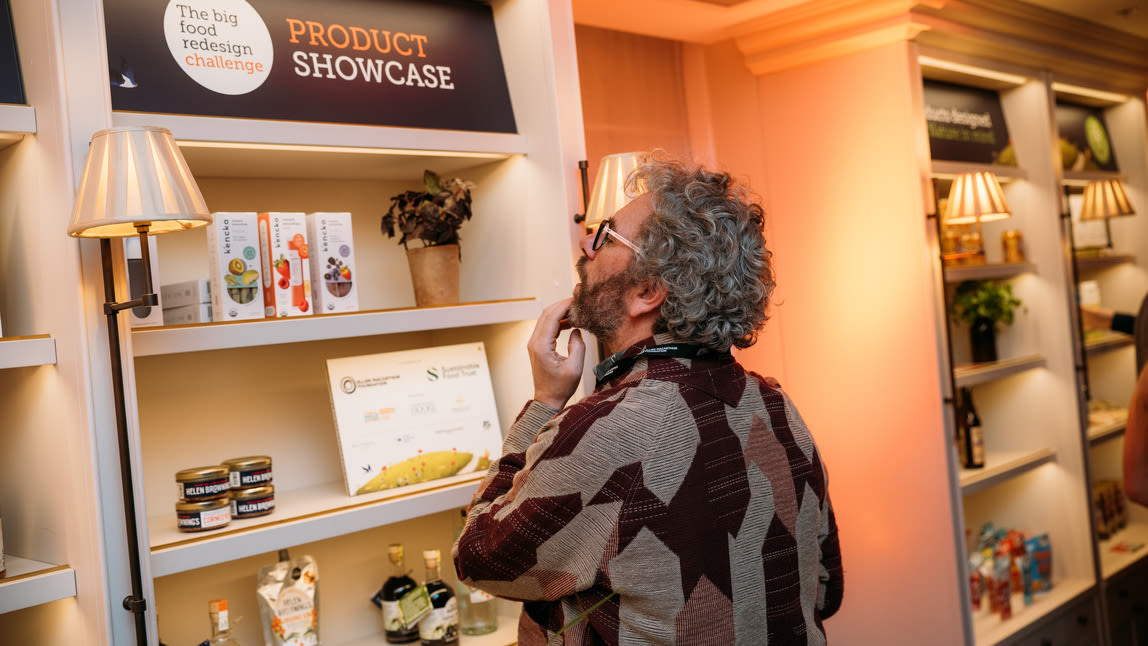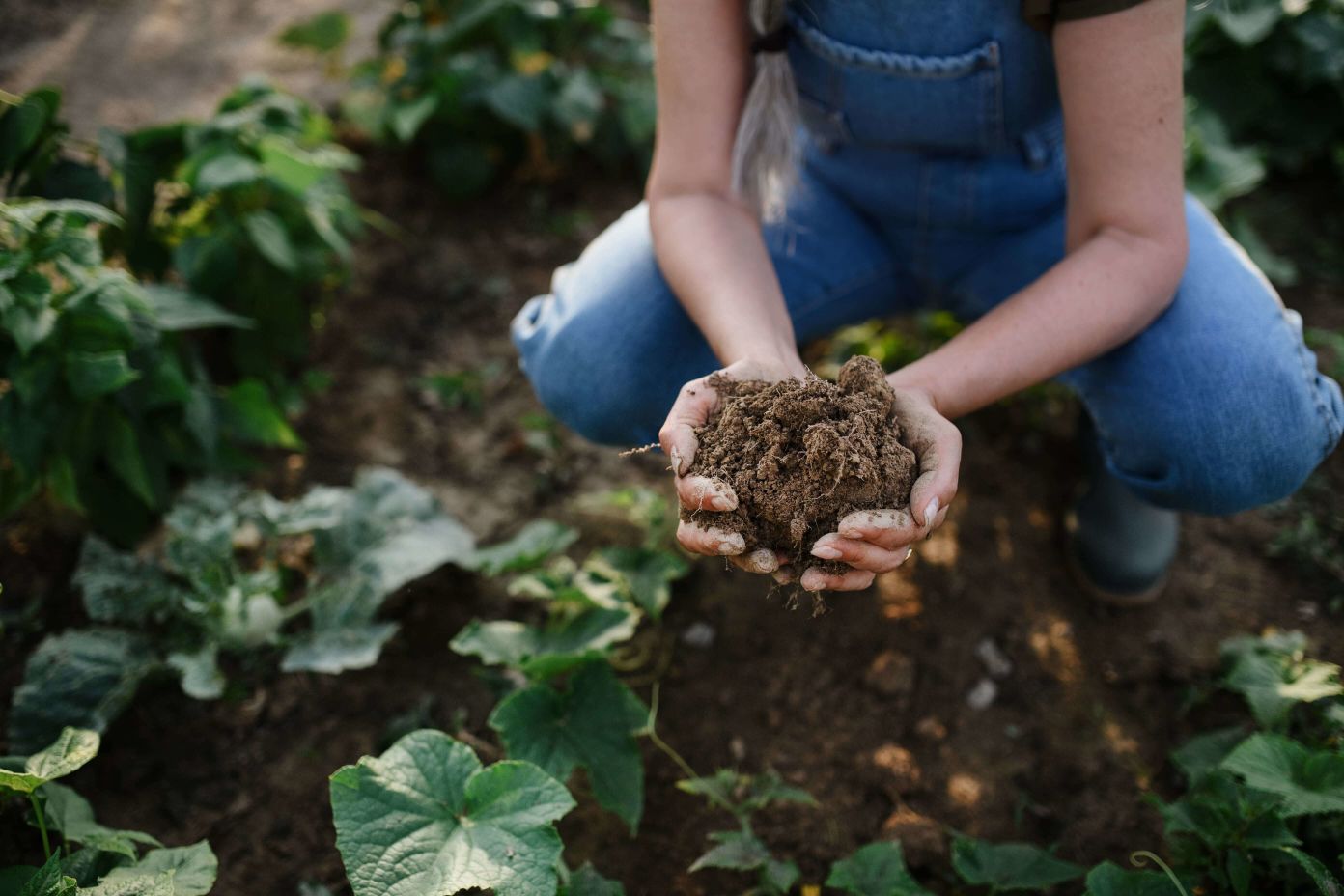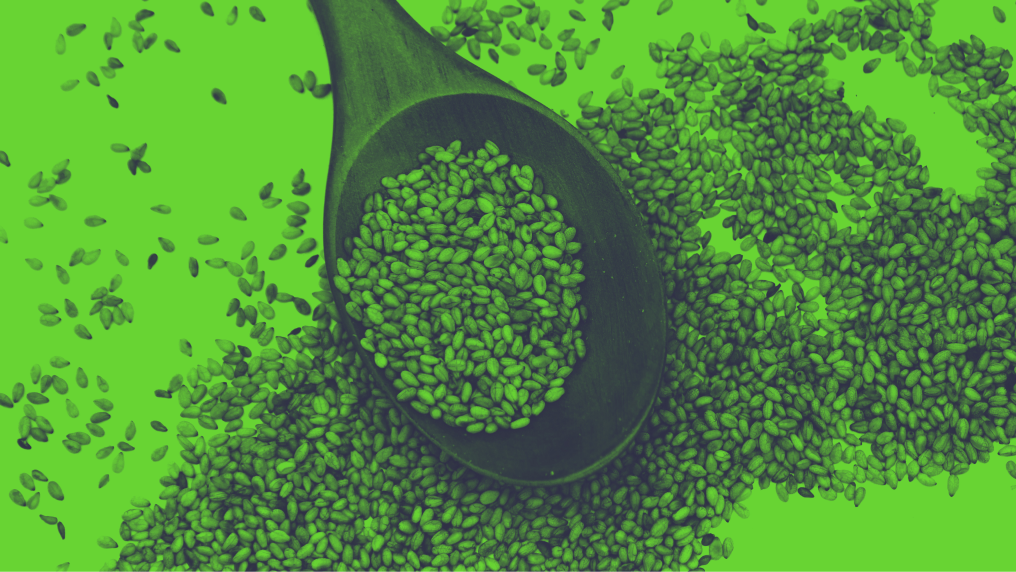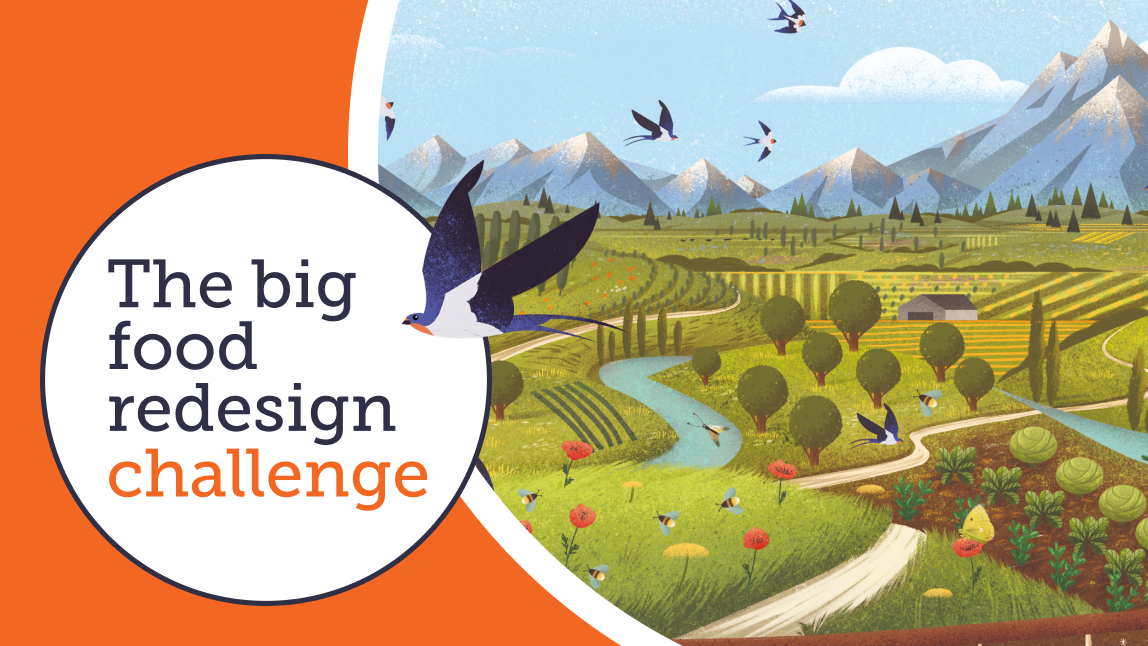1. Challenge: Taking the first step
Solution: Create networks of support
Challenge participants consistently reported the value of connecting with others with more experience of applying circular design principles to food.
For example, the Framework encourages sourcing uncommon ingredients. But here you may find you have a lack of knowledge around what other ingredients might be available, where you can source them for a reasonable price, and how they are processed.
Around half the products in the Challenge integrated diverse ingredients. In order to achieve this, participants tapped into, or developed, their relationships with farmers and suppliers. Over 1,000 different ingredients were used in the Challenge, proving it is possible to overcome some of these sourcing obstacles.
Speaking to those who have expertise, or prior experience, can also open up collaboration opportunities. The Wild Hare founder Dominie Fearn discovered this when she met the head of sustainability at food processor ABP in the dinner queue at the London launch of the Challenge in May 2023. From this introduction, she was able to arrange for a dedicated production line at ABP’s new carbon-neutral Ellesmere Port factory, using her preferred supplier of regeneratively-reared beef.
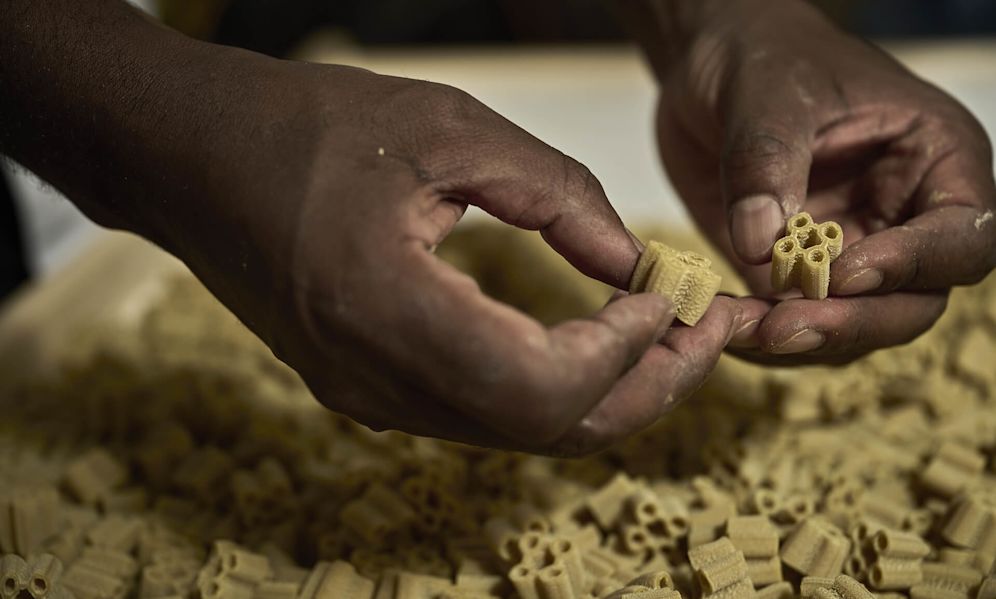
If you’re an early-stage start-up, consider joining a co-working space that already hosts other regeneratively-minded businesses. This was how Gabanna Foodworks’ founder Sean Patrick originally made contact with one of his sorghum suppliers.
Additionally, you can pick up tips and inspiration online through content like our behind the scenes films, or join events where you might find inspiration, peers, and mentors.
2. Challenge: Becoming, and staying, profitable
Solution: Think creatively to protect margins and explore sources of specialist investment

By contrast, sourcing and processing regeneratively produced, diverse, upcycled, and lower-impact ingredients requires a different model: one where farmers are recognised and rewarded for delivering benefits to nature. This model challenges the current cost structure and can place pressure on both consumers and manufacturers unless alternative approaches to value and investment are explored.
Some participants are working creatively to maintainmaintainKeep a product in its existing state of quality, functionally and/or cosmetically, to guard against failure or decline. It is a practice that retains the highest value of a product by extending its use period. healthy margins, while producing a product that delivers for nature. This can take a variety of forms. GoodSAM runs a direct trade model, enabling direct relationships with farmers of its ingredients, cutting out some of the costs incurred by long supply chains, and reinvesting into its farmers, cooperatives, associations and their communities.
The Wild Hare collaborates with retailer sustainability teams to provide data showing how its products contribute to Scope 3 emissions reductions and Net Zero targets. This data-driven value proposition strengthens their position during contract negotiations.
“Negotiating with the leading retailers remains cost-sensitive,” says Dominie Fearn, founder of The Wild Hare. “This way, the meal price becomes more competitive. Our data can help prove regenerative is a huge part of redesigning today’s food system”.
Challenge participants reported that even modest amounts of targeted capital can significantly accelerate innovation. This enables a moment of breathing space to research, innovate, and trial, without the pressure of looking at what competitors are doing. This can improve retailer engagement, retail readiness, and ultimately the ability to successfully bring products to market.
It’s worth investigating whether you can access external sources of funding and support to begin or accelerate your circular design for food journey. There are a range of organisations engaged in facilitating the transition to regenerative food production, including TIFS initiative, Bramble Partners, and Five Seasons, all of which Challenge participants had contact with. Some participants also cited engagement with organisations such as the World Bank Group and Gates Foundation. Relevance of partnerships like these will depend on your organisation’s size, funding needs and timeline goals.
Additionally, several collaborative projects are underway, such as those led by members of the OP2B coalition, channelling significant investment.
3. Challenge: Overcoming restrictions caused by existing business processes
Solution: Re-imagine business and team activities
Large companies referred to the way circular design triggered some useful internal structure changes. They found that the process of considering nature in their new product design process required them to break through typical organisational silos – for example between sustainability, marketing, research and development, and procurement teams. The process was beneficial: it sparked innovation, supported strategic alignment and helped the teams identify and leverage synergies. Ultimately, new ways of working meant that circular design became ‘baked in’ to their thinking.
Amongst the small to mid-sized companies, pursuing circular ambitions with support can prompt strategy changes.
"Taking part in the Big Food Redesign Challenge has given us not only the tools to bring our product to market, but also a great deal of education surrounding the topic of circular food systems. It's been a stepping stone to bigger, braver things.”
Annie Morris
Co-Founder of Spoon Cereals.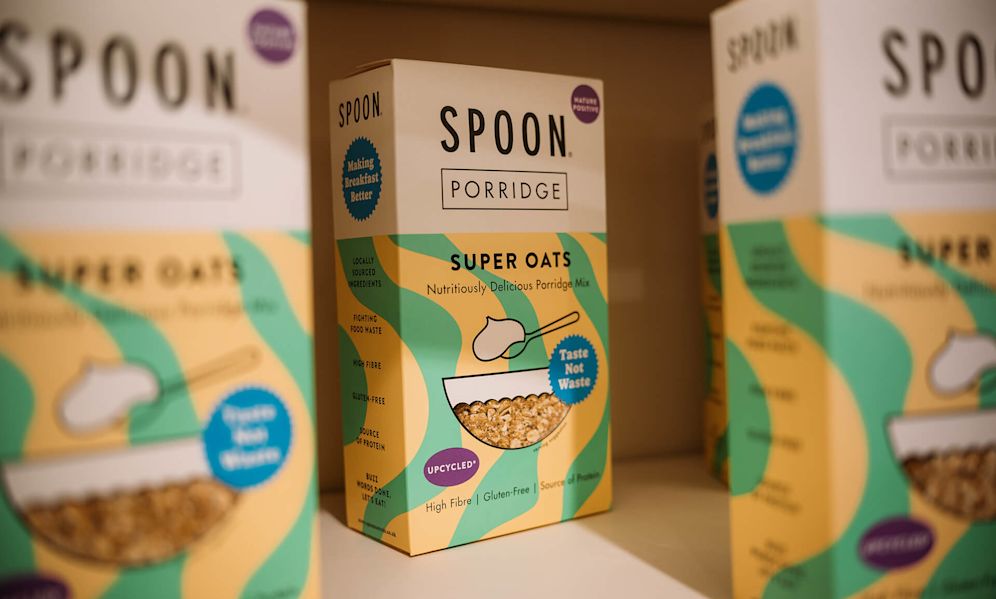
Watch this behind the scenes video where the Spoon Cereals team experiments with different types of oat, rethinks their recipes, and tackles packaging challenges.
Rather than seeing themselves simply as a food company, Gabanna Foodworks describes itself as a ‘biodiversity-centred food studio’. It collaborates with chefs and producers to source, combine and process ancient grains, botanicals, and other fruit and vegetables to create its pasta. It has also been investigating flexible small-batch processing plants, which can be sited near to its supplier farmers, making the processing of diverse ingredients simpler.
Other organisations with different business approaches include Konbit, which seeks to scale decentralised models, rather than scaling a single product. In Crete, it engaged multiple small organisations to create a carob-based spread and carob-based granola, with a reusereuseThe repeated use of a product or component for its intended purpose without significant modification. model for the packaging, selling to the hospitality sector.
B2B organisations, like Upcycled Foods Inc., apply their product development expertise to develop ingredient solutions in partnership with food businesses who seek to play their part in transforming the food system.
A number of pioneering businesses have embraced their agency within the system and explored ways to generate further value for producers. For example, Dunia Bora turns cacti, seen as a nuisance plant for farmers grazing livestock, into edible products, and also works to find uses for cactus byproducts, including using the fibre to create new textiles.
Partnerships that drive this kind of innovation can come from unexpected places. Tetra Pak, traditionally a packaging provider, is enabling early-stage food ventures through an incubation programme that helps develop the technologies needed to process regeneratively produced ingredients at scale. These kinds of cross-sector collaborations are essential to future-proofing supply chains and delivering shared value — from farmers to consumers.
4. Challenge: Overcoming implementation barriers caused by the linear system
Solution: Innovate, iterate, and build momentum with quick wins

Senegalese chef Pierre Thiam and food industry veteran Philip Teverow founded Yolélé to pioneer the commercialisation of ancient crops grown in Africa, such as fonio, bambara beans, and sorghum. The pair have faced multiple challenges such as effectively processing fonio which is a small grain and requires specialist production mechanisms.
Over time Yolélé has developed partnerships, secured funding, and is developing industrial scale processing equipment. But a first step was to partner with West African companies experienced in smallholder supply chains, conduct interviews with farmers, and develop aggregation centres for tools and training for them. Today, Yolélé sells several products that bring the flavours and ancient ingredients of West Africa to the world.
Breeding and growing seasons, and the fact we only have 24 hours in each day, will have implications for your timescales so it’s important to manage expectations. While the Challenge participants demonstrated just how much can be achieved in a relatively short period of time, many also reported being surprised how long the product development process took. A significant factor in this has been identifying the right ingredient suppliers and working with them to get samples for product testing.
It will still likely take time to shift entirely to products designed in line with circular principles. For example, it can take a lot of work to create or recreate the flavours and textures that end users are familiar with. The Planting Hope Company takes the pulp by-product produced by pressing sesame seeds for oil and transforms it into an alternative for dairy milk. But it took five years of applying food science to test different processes before the company created the first sesame milk.
Working at the frontier of a new food system requires the complementary attributes of patience and tenacity. Participants in the Challenge used multiple routes to reach the people they needed, for example writing articles to raise awareness of their work and doggedly attempting to reach key contacts. One participant shared that they sought to connect with specific ingredient producers and after 60 attempts had one successful conversation.
But what looks at first like a problem can be fertile ground for developing new ideas and opportunities. Some participants shared that the search for solutions (and ingredients) opened up greater existential questions, causing some to revisit the overall ethos of their business, then pivoting plans as a result.

For example, the challenges of sourcing black oats in enough volumes from Norway was solved by Spoon Cereals by switching to a less diverse, organically-produced ingredient – recognising that the latter was overall the choice that still aligned with their values and was possible to achieve at this stage.
The lack of existing solutions can present business development opportunities, for example the Circular Food Co produce upcycled ingredients, but it also provides innovation as a service after developing processing solutions that didn’t previously exist.
The first hurdle might be convincing colleagues. The bonus is, your organisation will not be the first to prove this is do-able. 57 Challenge participants, across 12 countries, with 141 products have already shown that applying circular design principles to product development is possible, and that doing so delivers better results for nature.
Those products are nearly 20% better than their industry equivalents across a set of metrics including emissions, soil health and biodiversity. To effectively communicate and present circular economycircular economyA systems solution framework that tackles global challenges like climate change, biodiversity loss, waste, and pollution. It is based on three principles, driven by design: eliminate waste and pollution, circulate products and materials (at their highest value), and regenerate nature. ideas, previous advocates of the circular economy shared how they succeeded in engaging colleagues.
5. Challenge: Deciding which environmental indicator to focus on
Solution: Keep the system in mind while using the Framework as a guide

Tequila consumption, for example, has surged globally, driving increased agave cultivation and resulting in increased deforestation as agave monocultures expand. To counter this, Agüita-Divina sources from the agave’s sap, instead of the piña (the heart of the plant), meaning the farmers can harvest more from the plant and reduce waste. The agave is also cultivated in a milpa system, a traditional intercropping method combining different food plants and poultry. Aside from producing a lower impact, diverse, alternative to tequila called pulque, this system provides farming families a balanced diet and a diversity of ingredients in the landscape.
The Circular Design for Food Framework can help you keep in mind that the magic happens when design opportunities are used together and are always underpinned by regenerative productionregenerative productionRegenerative production provides food and materials in ways that support positive outcomes for nature, which include but are not limited to: healthy and stable soils, improved local biodiversity, improved air and water quality. of the ingredients. 58% of Challenge participants combined two or more of the design opportunities (lower impact, diverse, upcycled), proving it is possible to achieve.
Learn about what thrives in an area, and in turn makes that area thrive. Today, we tend to bend nature to produce food, but through circular food design, we can increase demand for ingredients that help the environment in which they are grown thrive. The Challenge delivered a range of examples of manufacturers putting novel ingredients to uses that work for local landscapes and prove attractive to shoppers.
Prohempotic has developed products using hemp, and is working with local farmers to avoid tilling, irrigating, or pesticide use. It’s also collecting data and tracking regenerative outcomes at the field level. It has found that hemp grown in the right area, in a way that supports regenerative outcomes, can provide multiple beneficial outcomes for nature.
Helen Browning’s hot dog in the Challenge uses a rare breed pig that is well suited to an outdoor system, which when managed well can play a role in breaking up and fertilising the ground, and support the growth of diverse pasture species or new trees in agroforestry systems.
Morrow is analysing thousands of flavour compounds to identify which lower impact, upcycled, and diverse ingredients can produce the same taste profile as a traditional coffee. By improving our understanding of ingredients, we can better appreciate the difference those choices make.
6. Challenge: Understanding what nature needs
Solution: Get closer to those who produce your ingredients
Farmers often struggle to keep their businesses viable in the face of extreme weather events, tight margins, market demands, long hours of physical work, and increasingly complex decisions. They’re also navigating expectations to complete rising amounts of reporting and supply of data from their farms, for which they are often not paid. Successful partnering with them means finding ways to meet their needs, so that they can continue to protect their corner of nature while producing food.
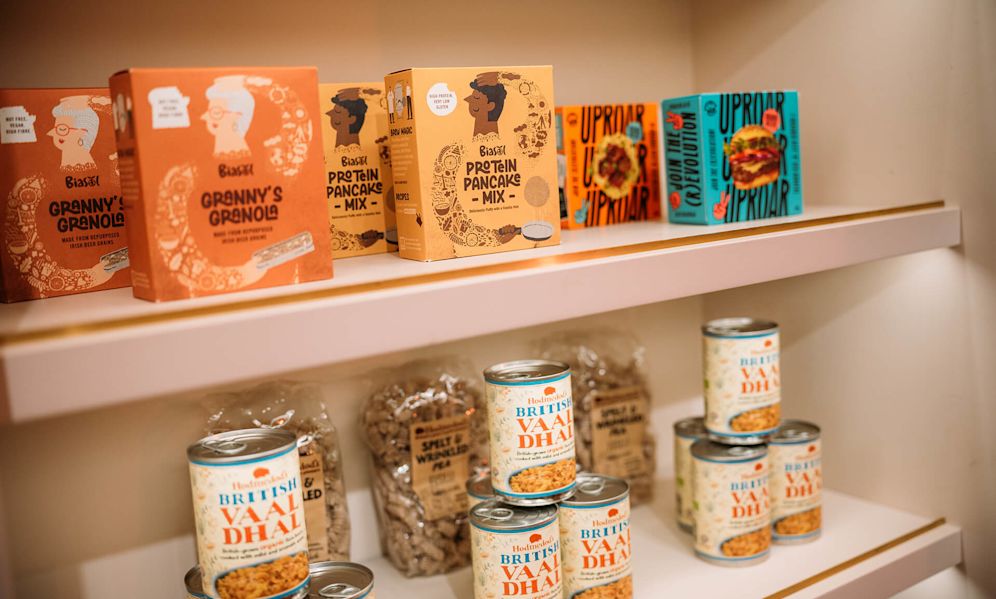
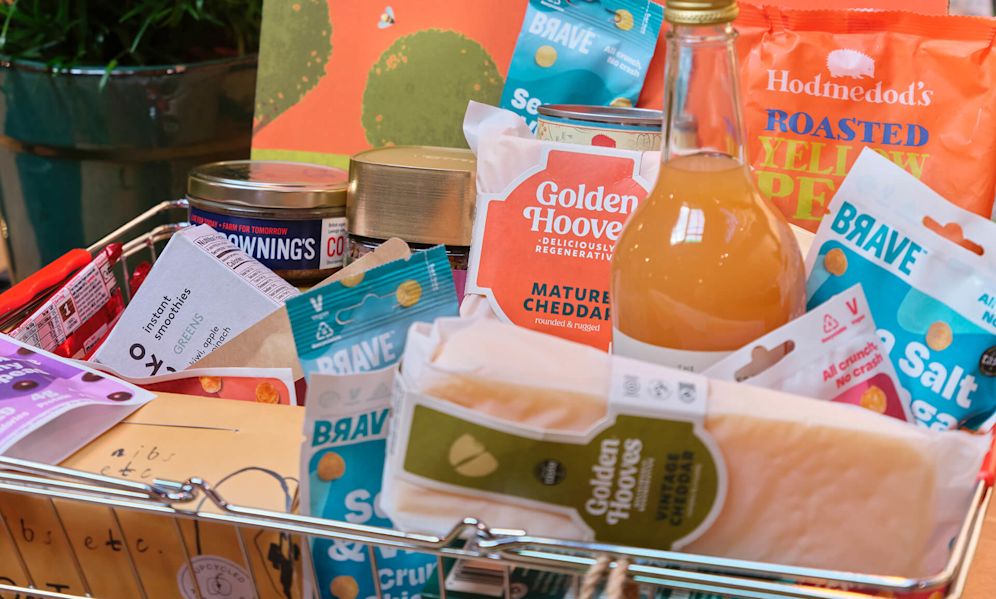
Food companies’ engagement with farmers can take many forms, from direct incentives to developing products using unusual, resilient crops. Golden Hooves, a First Milk brand, sources all its milk from First Milk farmers for its cheeses. Those farmers who adapt their practices to improve soil carbon, water protection and biodiversity receive higher payments for their milk.
Hodmedods sources diverse ingredients directly from farmers. For example, rye — an under-utlised crop in the UK — is both disease-resilient and tolerates wet and dry weather well, making it ideal for the UK climate.
By buying under-utilised and diverse crops, companies can create a market and thus an incentive for farmers to grow ingredients that can help nature thrive. Collaborations of diverse organisations can also play a part. Gabanna Foodworks is part of a Dutch business collective working on business models that support greater yields and better crop utilisation, while producing pasta from ancient grains.
Challenge participants also shared that by creating closer relationships with farmers they were able to share their goals, introduce new approaches to ingredient production, and gain new ideas and insights from the farmers and growers themselves.
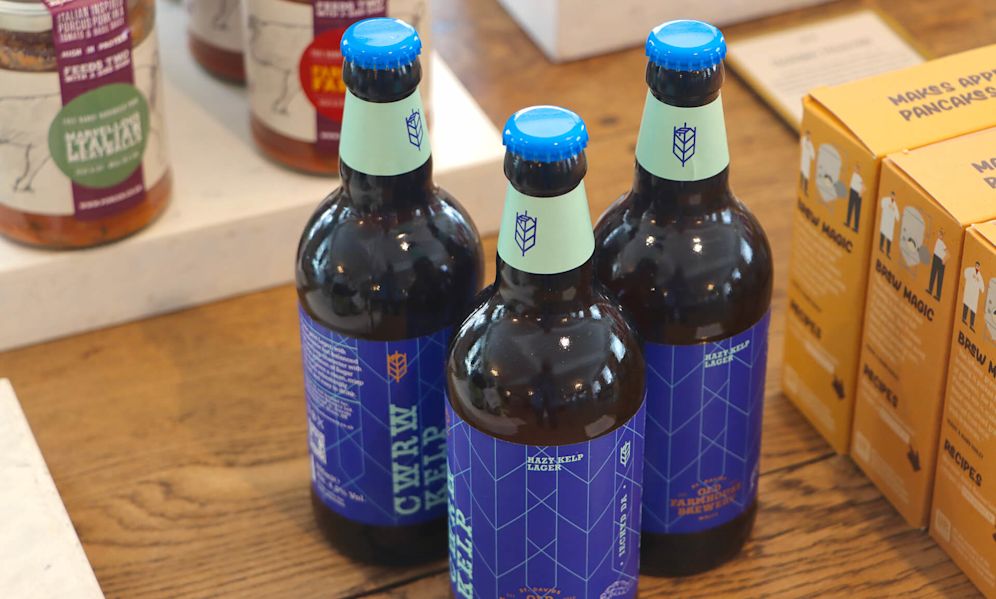
Building these partnerships can be highly dependent on context and location. For example, companies sourcing upcycled ingredients, such as brewers spent grain, may have to go through breweries that may have distant relationships with the growers of the grains used in the brewing process. Whereas The Old Farmhouse Brewery, is part of a farm diversification model, making it simple to know exactly how the beer ingredients are grown as they are connected parts of the farm’s business.
Close relationships with farmers over time can build trust. Bí Urban refers to the farmers that help it test new potato varieties as its ‘citizen scientists’. This kind of partnership can reassure farmers that orders will be honoured, giving them the confidence to forge ahead with new ways of farming. It also enables farmers to become more aware of potential future markets where crops such as sesame can perform as both cover and cash crops, helping to support soil health while also providing an income.
7. Challenge: Demonstrating regenerative outcomes
Solution: Invest in data collection
The Wild Hare has developed an app that gives it solid data about the relatively low-carbon emissions of its products, meaning this information can be shown on packaging and contribute to retailers’ Net Zero and scope 3 targets. The app is shared with all the organic farmers that supply the brand, using satellite data to guide farmers on optimal timing for moving their cows to achieve regenerative outcomes.
Matriark also demonstrates how its products help retailers’ and foodservice companies' environmental ambitions, completing life cycle analyses on its products.
Wildfarmed has teamed up with research institutions to aid its data collection efforts, with teams counting wildlife species in the fields of the brand’s partner farms.
8. Challenge: Breaking down food system siloes
Solution: Create value through multi-stakeholder partnerships
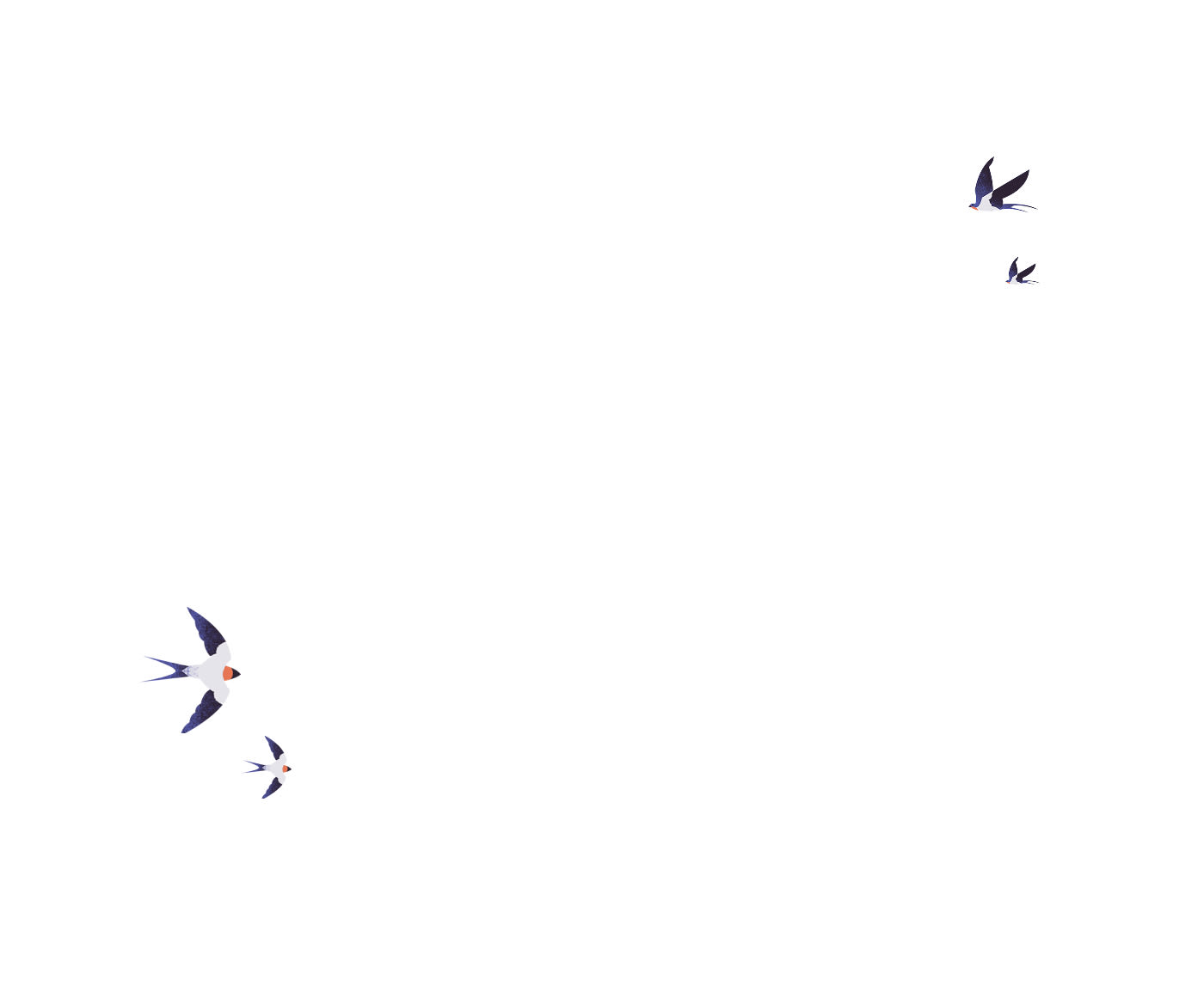
Being part of organisational networks, for example the Upcycled Food Association and programmes such as the Big Food Redesign Challenge can help organisations learn together, collaborate, and raise awareness of the challenges and opportunities in creating a new food system. Similarly, seeking out and hearing from peers’ experiences at events (such as Groundswell in the UK) can be inspiring and provide helpful networking.
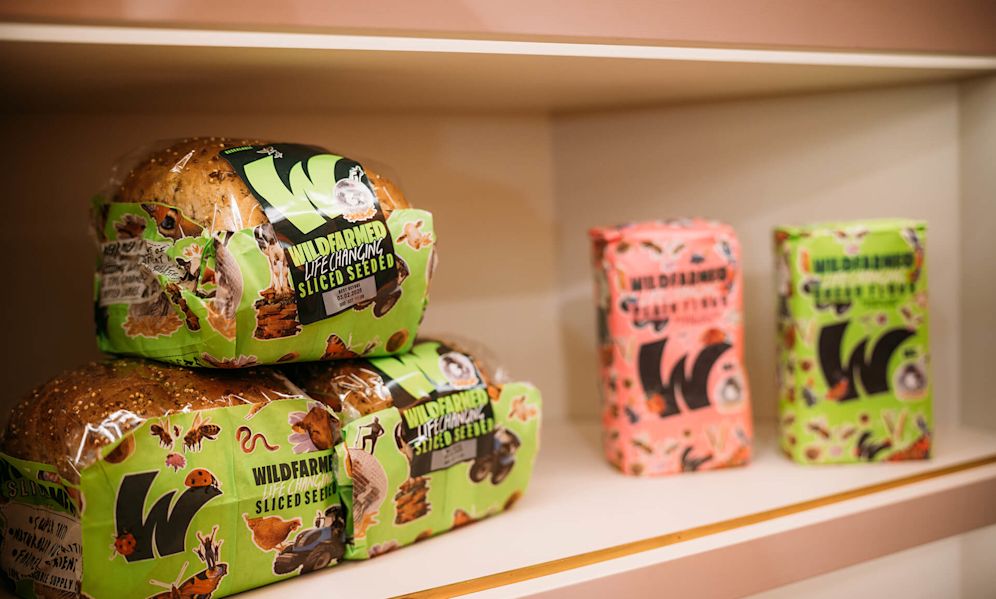
Partnering with non-food organisations can also aid food system transformation. Water companies, for example, are working with farmers to improve water quality. Reducing the use of pesticides and building greater water-holding capacity of soil can mitigate against contaminated run-off into rivers and the sea. Several of the major water companies have agreed that adherence to Wildfarmed’s regenerative standards can unlock a premium for farmers.
Some participants shared that the siloed nature of today’s food system — both across the sector and within organisations — can be a blocker to progress. However, participants saw value in supporting others and often stepped into advisory roles, helping organisations address challenges such as how to close resource loops within businesses. This means analysing how resources, from ingredients to packaging, can be kept at their highest value, through reuse, upcycling, and (as a last resort) recycling.
‘Waste’ streams from one organisation might be valuable ingredients for another. For example, oat okara is a residue that is a by-product of the creation of oat-based drinks. Food manufacturers can upcycle this fibre and protein, for example as Nude has done in its Cereal Proteico. Leveraging ingredients in this way can develop direct relationships with other food companies and work on collection systems, serving both the by-product producer and the food business.
9. Challenge: Communicating complex circular design concepts
Solution: Craft accessible stories that inspire action
“Stories are more impactful and motivating than statistics, and give people a kick up the bum to do something.”
Poppy Mason-Watts
Chief Growth Officer at WaterBearNibs’ founder Chloe Stewart found it tough to convince suppliers of spent grain or rapeseed meal (a by-product from extracting oil from rapeseed) to supply her rather than waste-to-energy processors or animal feed producers. But, as she explained on this episode of The Circular Economy Show podcast, her most successful approaches were those where suppliers understood the bigger picture of what her upcycling business was trying to achieve.
She also had a specific piece of advice for other food upcycling pioneers – try to avoid the word ‘waste’.
“If I had a magic wand, I’d delete the word waste from our vocabulary. There is no waste in nature. If you replace it with the word ‘resource’, then it becomes something with potential.”
Chloe Stewart
Founder of NibsParticipants also shared that using relatable language and concepts helps to reach new audiences and build trust with those who are less familiar with terms such as upcycled and regenerative production, while also joining the dots between what’s in our fridges and the impact on ecosystems.
Gabanna Foodworks strategy is to combine diverse ingredient sourcing with familiar food ‘classics’. “The barrier to adaptation is the unfamiliarity”, explains founder Sean Patrick. “By using formats that people know, like our pasta and cereal, it’s a way to make it easier for people to adapt to diversity in the ingredients”.
Keeping the tone fun and accessible can empower and inspire audiences. Eve Seeman, head chef at Apricity, a zero waste restaurant sourcing seasonal and sustainably produced ingredients, recommends a constant reality check, as well as a focus on keeping the tone of communications light and engaging.
“When in a closed circle of like-minded individuals, it is easy to overlook the fact that our thinking pattern isn’t widespread quite yet. I strongly believe that if we can go through the motions in a fun, engaging way, taking away the sternness of the situation, we are more likely to have an impact and render this philosophy more accessible to a broader audience. By targeting the disinterested and uninformed, we can pique their curiosity and interest in areas that might otherwise go unnoticed.” – Eve Seeman, head chef at Apricity
Many participants focused their trade and consumer marketing efforts on sharingsharingThe use of a product by multiple users. It is a practice that retains the highest value of a product by extending its use period. the unique origins and missions of their brands, betting that both retailers and end users would be attracted to their values.
10. Challenge: Creating packaging in line with circular design principles
Solution: Assess what is essential and think outside the box
Participants faced challenges with innovation readiness, airtight requirements, product visibility, and high production costs in the absence of economies of scale. While packaging options are improving, challenges remain. For example, infrastructure — such as compostingcompostingMicrobial breakdown of organic matter in the presence of oxygen. facilities — still needs to catch up with design innovations.
Challenging ourselves to think about the outcome we ultimately want to achieve can open the door to new ideas. It’s easy to assume packaging is necessary, but that isn’t always the case. It’s worth thinking whether any part can be eliminated.
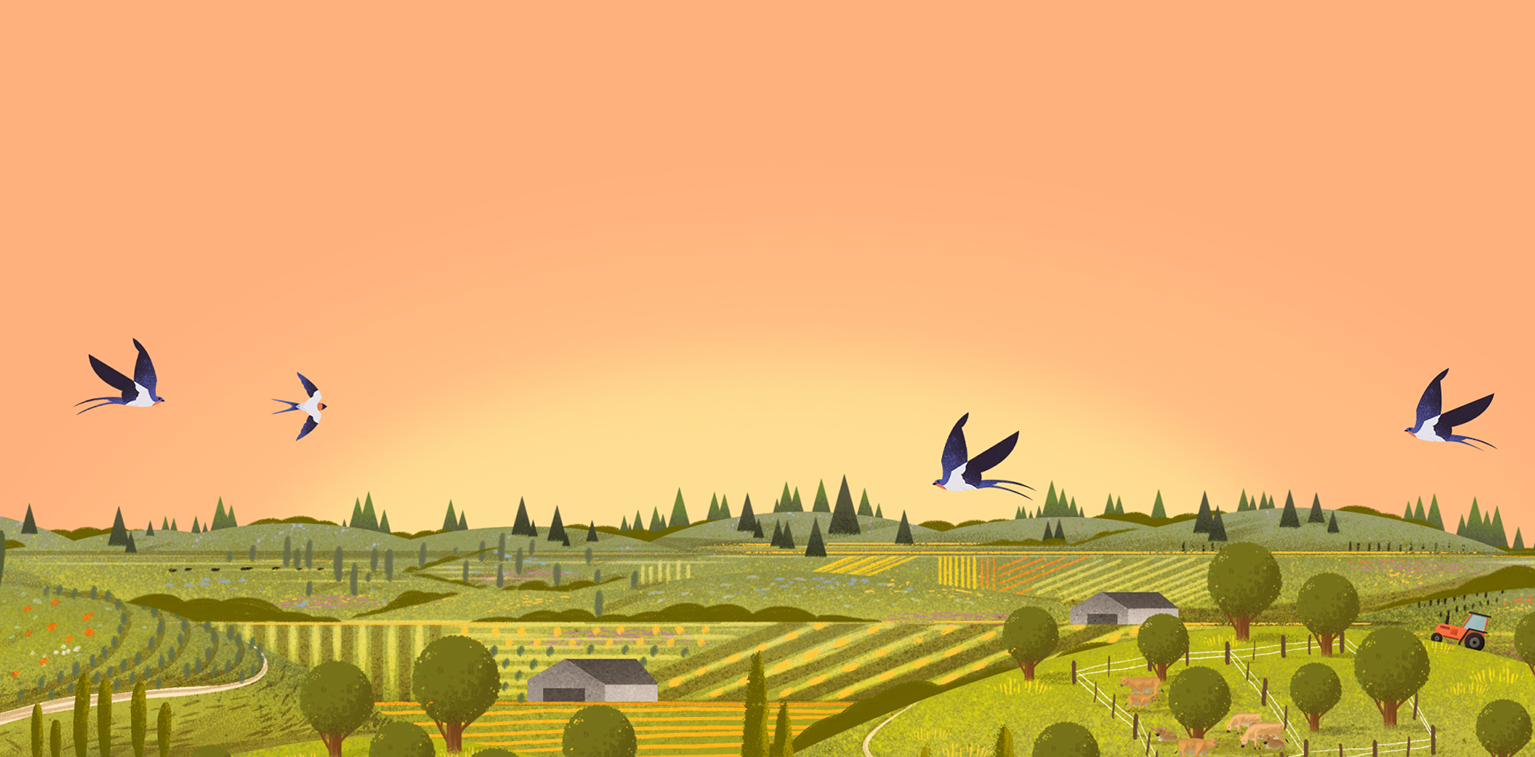
How to make circular design for food work in your business
The following pages provide practical advice for successfully implementing circular design principles into your food business, illustrated through the experiences of our 57 Challenge participants.
